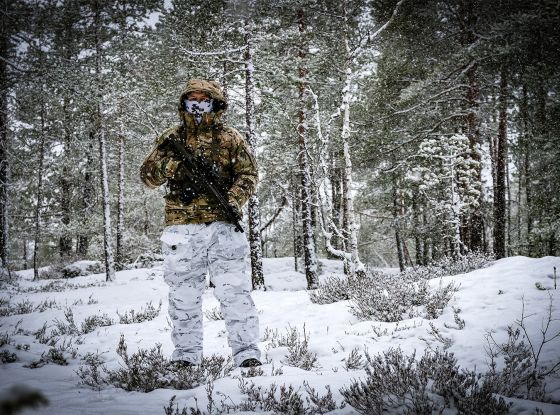Ever had the feeling someone’s following you? Whether you're exploring a new city or walking in your own neighborhood, spotting a tail is a key skill for personal safety. With simple techniques like the TEDD method and strategic moves, you can detect, deter, and stay in control.
In this blog post:
Spotting Your Tail
As tourists in our city or abroad, we're surrounded by pickpockets and need to stay aware of our surroundings. This isn't the time to play James Bond and try to apprehend them. If you recognize someone suspicious, they're likely up to no good—but without proof of wrongdoing, you have limited options.
However, if someone is specifically following you and you want confirmation before involving security or police, or if you want to avoid or confront them, there are several safe tactics you can use.
1. Defensive Tactics on Foot
Let's focus on foot surveillance. The TEDD method taught us what to look for—primarily the correlation between time, distance, and location. Once we spot a pattern, we can employ counter-surveillance techniques.
Breaking Away from the Crowd
While it's easier to follow someone in a crowded space, you can use this to your advantage.
If you suspect you're being followed, step out of the crowd and take a less-traveled path. Duck into a side alley to see who follows. Your tail will either abandon the pursuit or reveal themselves by following you out of the crowd.
When observing people, keep this rule in mind: seeing someone once is chance, twice is coincidence, but three times is confirmation. You're being watched, followed, and possibly assessed for an attack, as we demonstrated in our previous video.
Standard procedure states: "Eye contact—no more contact."
At "the farm," surveillance operatives learn their first rule: never make eye contact with the target. It immediately compromises your cover. Standard procedure states: "Eye contact—no more contact." After being "burned," agents must move to background operations rather than direct surveillance. While exceptions exist, we won't detail those. If you suspect someone's watching you, give them a direct look and a wink.
Making Your Tail Uncomfortable
Give them your best thousand-yard stare.
Even pickpockets and muggers are savvy observers. Direct eye contact usually makes them retreat. If you're wrong, you've merely flirted—but if you're right, you've signaled to the surveillance team that they're compromised. Make it uncomfortable: stare openly, give them your best thousand-yard stare, and amp up the awkwardness.
The more obvious you make it, the clearer your message becomes to hostile surveillance that they're exposed. If they're not professional operatives but potential thieves, they'll likely back off.
Tricks to Spot or Deter a Tail
- Beyond staring, try this: abruptly reverse your direction, walk back for a minute or two, then resume your original course. This confuses your tail and forces them into obvious mistakes.
- Revolving door test: Enter a building with a revolving door, walk briefly inside, then turn back. Watch their confusion as they're trapped. For extra effect, slow the door's rotation while maintaining eye contact.
- Try the elevator trick: enter, but exit before the doors close—after pressing multiple floor buttons. Let them enjoy their unexpected tour.
- If your instincts signal you're being followed and you have time, slow down and act aimlessly. Linger in open areas where surveillance teams struggle to remain hidden. When you move, they'll have to move tool.
- In a marketplace, walk in figure-eight patterns around the stalls. Since typical shoppers don't move this way, you'll easily spot your tail.

SUBSCRIBE TO UNLOCK OUR EXCLUSIVE CONTENT
Enter your email and get timely updates and relevant intel on tactical topics directly to your inbox.
You are signing up to receive updates via e-mail from which you can opt out at any time. Visit our privacy policy for more info.
2. Defensive Tactics in a Vehicle
Identifying Suspicious Vehicles
- In mobile surveillance, things get more interesting. Take multiple loops around a roundabout to force your tail to pass you.
- Another strategy: stop at a rest area and perform some basic maintenance—check oil and tire pressure. Continue driving, then stop for gas at the next station. This either loses your tail or rattles their nerves.
- Try signaling a turn while slowing down, then accelerate straight ahead instead.
Avoid going "Mad Max" on the highway or channeling Knight Rider with reckless driving. Instead, vary your speed strategically—alternating between faster and slower paces.
Watch for vehicles matching your unusual driving pattern. After all, who else would mirror your erratic circles around town?
Conclusion: Confidence Through Awareness
Losing a tail isn’t about playing secret agent—it’s about staying safe, aware, and in control. By applying the techniques outlined here, you can effectively spot and deter anyone following you, whether it’s on foot or in a vehicle. Using tools like the TEDD method, direct eye contact, and strategic movement, you can make it clear that you’re not an easy target.
Remember, the key is to stay calm and observant. Trust your instincts but always prioritize your safety. If you suspect real danger, don’t hesitate to involve the authorities. These skills aren’t just about outsmarting a tail—they’re about reclaiming your sense of security and moving through the world with confidence.
Situational awareness is your greatest ally. The more you practice these techniques, the more natural they’ll become, helping you navigate potential threats with clarity and composure. Whether in your hometown or traveling abroad, you now have the tools to protect yourself and stay one step ahead.




